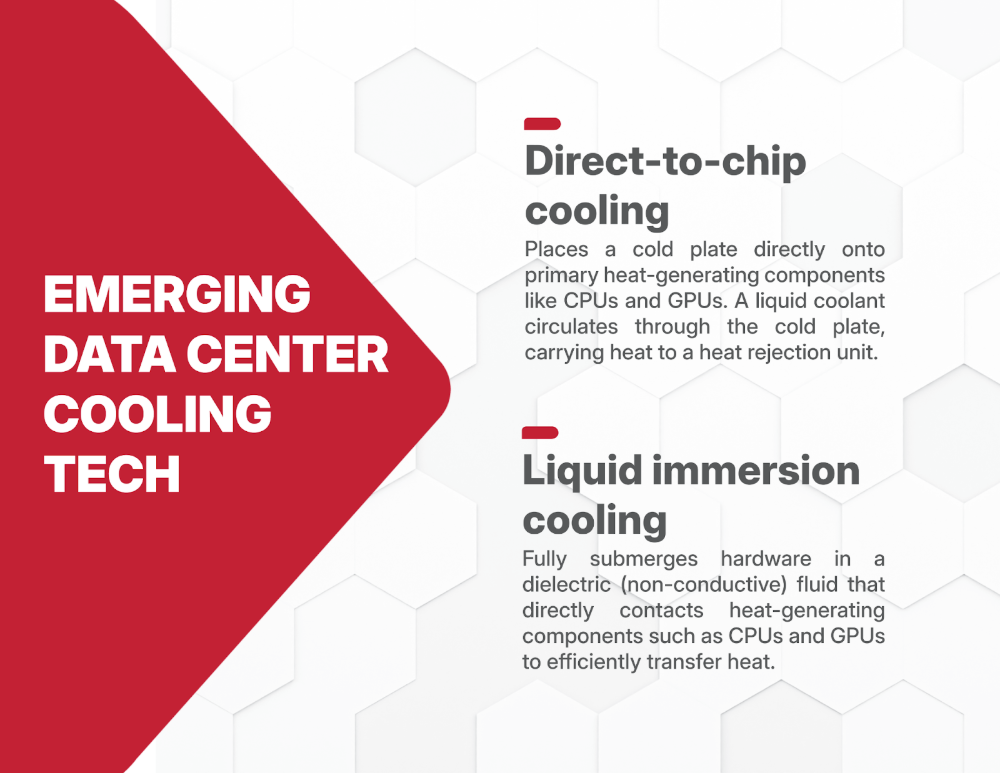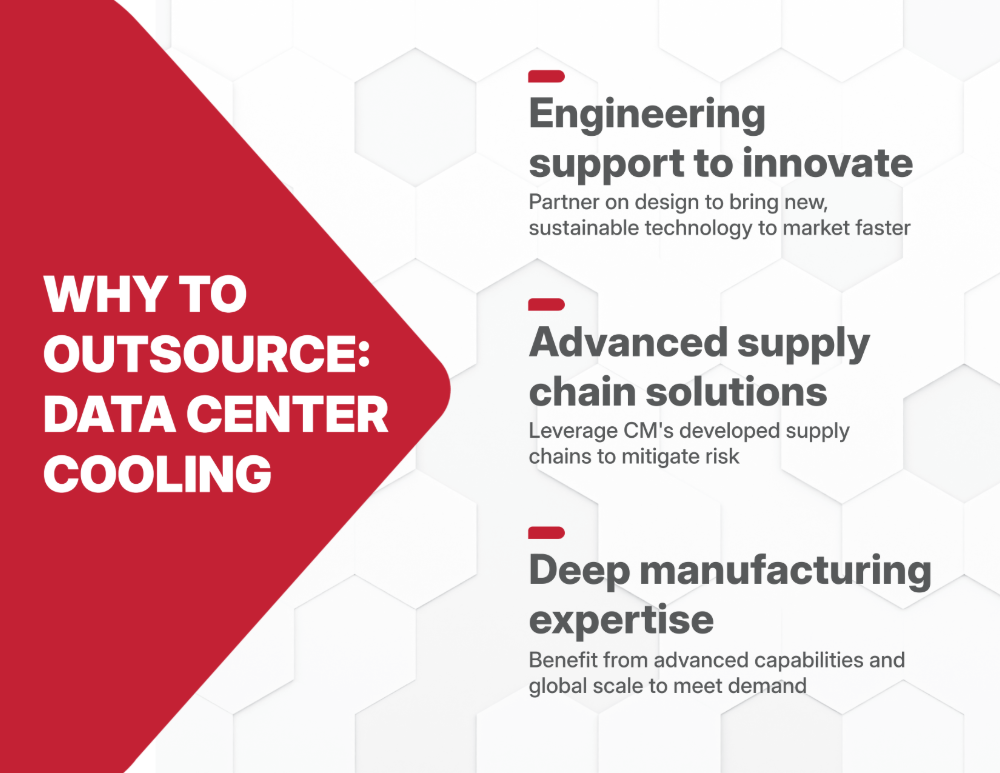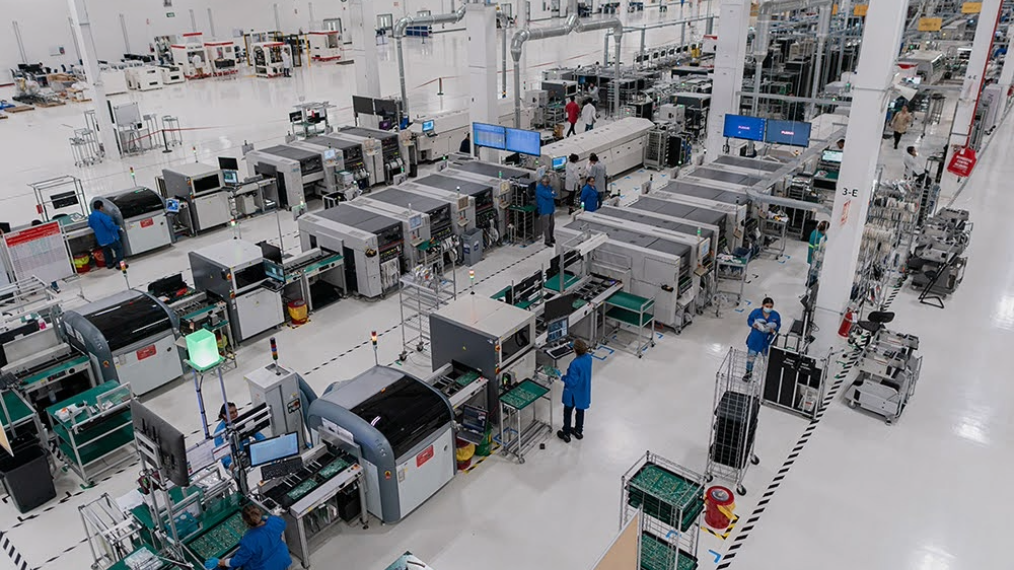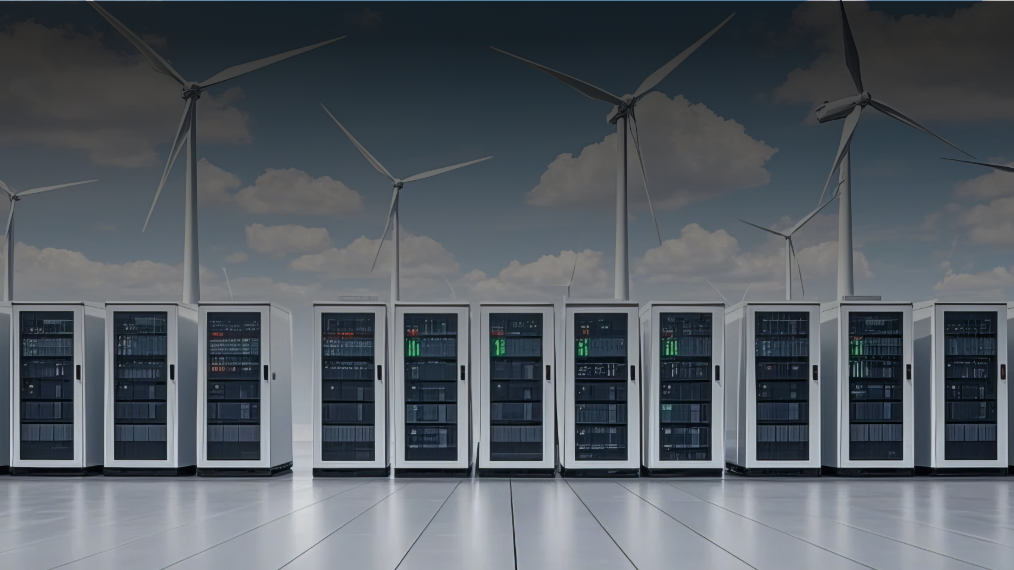Data Center Cooling: How to Scale with Pace and Stability

The data center industry is undergoing significant expansion due to the increasing volume of data and the rise of compute-intensive applications such as artificial intelligence and machine learning. This growth has led to notable advancements in technology and scaling by both established companies and new entrants in the data center sector. Consequently, there has been a necessary investment in data center cooling, including rapid development of more energy-efficient cooling technologies.
To effectively and quickly address these demands, data center cooling original equipment manufacturers (OEMs) should consider partnering with an electronics manufacturing services (EMS) company. Contract manufacturers can offer engineering services for increasingly complex technology, efficiently manage supply chain risks, and apply extensive manufacturing expertise to launch and scale the next generation of innovative data center cooling systems.
Importance of Data Center Cooling
More powerful computing technologies require greater energy resources, making efficient cooling technology more critical than ever to mitigate data center energy usage and operating costs. The data center industry faces a great challenge to address sustainability as both footprints and energy needs rise. Projections from the International Energy Agency (IEA) indicate that global data center electricity consumption, which stood at 460 TWh or approximately 2% of global usage in 2022, is on track to potentially double by 2026.
In many North American and European markets, energy availability and relatively high energy costs further emphasize the need for hyper-efficient cooling to ensure operational viability and expansion. The sustainability challenge is particularly acute in Europe, where strict regulatory frameworks and ambitious climate targets underscore the urgency for environmentally friendly data center operations.
Data center operators will look to cooling OEMs to improve their technology to meet the energy needs of rising workloads. For traditional air cooling methods, facilities optimizations may provide some efficiency improvement without major capital upgrades. Existing systems will also benefit from applying advanced analytics to systematically understand and address cooling issues.
Further, new technologies are on the rise to make step-change improvements in efficiency by reducing energy, water and space required to cool the data center. There’s also a growing focus on waste heat recovery and reuse, an increasingly vital aspect of the circular economy principles promoted in particular across Europe.
Emerging Liquid Cooling Technologies
Liquid cooling solutions are increasingly necessary for effectively managing the high heat loads generated by dense AI/GPU server deployments.
Estimates suggest liquid cooling can be up to 40% more efficient than traditional air cooling systems. This efficiency is paramount for data centers aiming to meet stringent energy targets set by initiatives like the EU Energy Efficiency Directive (EED), which mandates PUE reporting for facilities above 500 kW, and the Climate Neutral Data Centre Pact (CNDCP) targeting climate neutrality by 2030.

Both direct-to-chip and liquid immersion cooling solutions are experiencing strong growth in the data center cooling market.
- Direct-to-chip cooling: This method places a cold plate directly onto primary heat-generating components like CPUs and GPUs. A liquid coolant circulates through the cold plate, carrying heat to a heat rejection unit.
- Immersion cooling systems: This approach fully submerges servers or other hardware in a dielectric (non-conductive) fluid that directly contacts heat-generating components such as CPUs and GPUs to efficiently transfer heat.
How Contract Manufacturing Partners Can Help
Data center cooling OEMs can accelerate their innovation by collaborating with EMS companies. By tapping into these partners’ engineering, supply chain and manufacturing solutions, OEMs can take advantage of rapid industry growth with confidence.

Engineering Services to Accelerate Innovation
To scale efficiently, data center cooling companies will have to address both products and the manufacturing process. Contract manufacturing partners with robust Design for Excellence (DfX) solutions can recommend enhancements that optimize electronic component, sub-assembly and higher-level assembly design for manufacturability. This can unlock improved component costs and manufacturing efficiency on existing or new products.
To further address product sustainability, partners knowledgeable in eco-design principles can advise on reducing the total emissions generated through a product’s life cycle. Design teams can assess the emissions impact of materials, the assembly process, shipping, product use and end-of-life treatment. This analysis, known as Life Cycle Assessment, can also identify ways to reduce material usage that positively affects a product’s total landed cost. Cooling technology OEMs can use this knowledge to reduce the industry’s carbon footprint through cooling system product design.
Supply Chain Solutions for Scale
Supply chain solutions will be critical for data center cooling companies to accelerate amid greater demand. A contract manufacturing partner can incorporate supply chain decisions early in product design to build products with supply chain resiliency in mind.
Working with an EMS partner can help build strong, localized supply chains near a data center cooling company’s end markets, which is critical for these large systems. Partners can source custom-engineered components and critical electronic components alike as new technologies are developed, leveraging their expansive supplier networks. Further, that network can mitigate supply chain risk as data center cooling OEMs expand into new markets.
Deep Manufacturing Expertise
As manufacturing experts, contract manufacturing partners bring the experience needed to meet new product introduction timelines and achieve quality targets. By trusting an EMS partner, cooling technology OEMs can take advantage of project management capabilities built for launching new products. Further, these companies can incorporate established competence in continuous improvement, advanced automation technology and quality processes to improve manufacturing efficiency.
Choosing an EMS partner with global locations also provides OEMs an opportunity for frictionless geographic expansion. A global partner that is integrated across regions offers a seamless pathway to manufacturing near end customers in new locations. This will be of particular interest to cooling tech OEMs that look to expand beyond the existing geographic data center hubs, such as Northern Virginia in the US and the FLAP-D cities in Europe. A global EMS partner can help reliably support that expansion as data center operators seek new regions with lower operating costs, greater land availability and access to renewable energy sources.
Contact Plexus to Scale Your Data Center Cooling Technology
Data center cooling technologies must continue to advance to meet energy demand, while powering data centers in an environmentally efficient way. Cooling technology OEMs can accelerate this transformation through partnerships that strengthen design, optimize supply chain and scale manufacturing. This collaborative approach enables both rapid growth and adherence to the high standards of sustainability and operational resilience.
Plexus is a global contract manufacturer powering Industrial businesses at the center of the data center industry. Our design, manufacturing and servicing solutions support innovative companies across the product lifecycle.
Contact Plexus
Contact us today to discuss how Plexus can help you grow.


